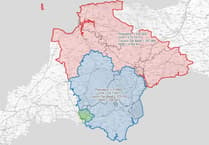Electric vehicle ownership will increase as they become more affordable and reach the second-hand market. So how will the electricity grid handle the demand for electricity when there are more EVs on the road?
National Grid states on its website that some electricity capacity will be freed up by using less petrol and diesel. It estimates that, “Refining 1 gallon of petrol uses around 4.5kWh of electricity”.
Electricity is used to heat crude oil up to 400C in the refinery to make petrol and diesel. UK oil refineries have their own dedicated feeds from the nearest power station. Added to that is the energy used to pump or ship the crude oil ashore, and to power the drilling rigs. Three floating windfarms are being built in the North Sea just to power the offshore platforms.
EVs are far more energy efficient, at over 80%, than internal combustion engine cars at around 20% in real-world driving conditions. National Grid states, “Even if we all switched to EVs overnight, we estimate demand would only increase by around 10%. So we’d still be using less power as a nation than we did in 2002 and this is well within the range the grid can capably handle.”
Other innovations like smart charging allow EVs to charge when there’s less demand on the grid, or when more renewable, and therefore cheaper, electricity is available. This means EVs can help to balance the grid.
At its simplest, you can programme your car or smart charger to hold back until the quiet hours of the night when there is a surplus of energy. By signing up to Smart tariffs, you can leave it to your energy supplier to schedule your car’s charging. Octopus Energy manages the charging for 150,000 electric car batteries allowing it to schedule 1GW of power use.
National Grid sees a big role for cars feeding power back into the grid using Vehicle-to-grid (V2G) technology, estimating that capacity could reach 39GW. This turns your EV into an energy storage system, allowing you to sell any excess energy stored in your EV’s battery back to the grid at profit.
To test the reliability of V2G during an emergency, a fleet of 51 Nissan Leafs and their owners took part in a trial in Australia. The cars were programmed to monitor the grid whenever they were
plugged in, and if the grid were to rapidly lose power, they were programmed to rapidly discharge their batteries back into the grid.
Their moment came when a storm caused a power outage earlier this year; 16 of the cars were plugged in, four were charging and were able to quickly reverse course and discharge into the grid, while 12 that were idle were able to respond and start discharging within seconds, giving the first real-world demonstration of the ability of EVs to help keep the lights on





Comments
This article has no comments yet. Be the first to leave a comment.